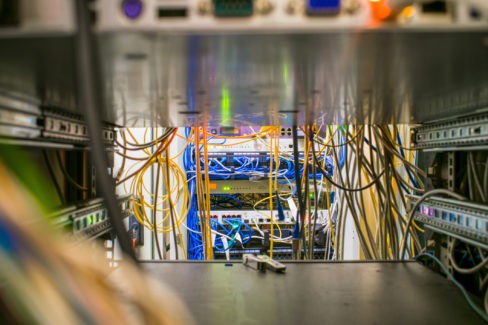April 22, 2022
Artificial intelligence, whereby blazing fast computers are trained with massive amounts of data to perform human functions like image processing and speech recognition, is on the rise. Again.
That’s according to a late 2021 report by Gartner, which predicts $62.5 billion in total worldwide artificial intelligence software revenue for 2022—up 21.3 percent from the previous year. McKinsey, too, foresees a global uptick in AI usage. Based on a mid-2021 survey, “56 percent of all respondents report [AI] adoption in at least one function, up from 50 percent in 2020.”

Mirroring its past two surveys, McKinsey revealed, business functions where AI adoption is most common include service operations, product and service development and marketing and sales. Top use cases include service-operations optimization, AI-based enhancement of products and contact center automation. In terms of AI software spending for 2022, Gartner says it will be primarily focused on knowledge management, virtual assistants, autonomous vehicles, digital workplace and crowdsourced data.
However, as Gartner senior research director Alys Woodward explained, “Successful AI business outcomes will depend on the careful selection of use cases. Use cases that deliver significant business value, yet can be scaled to reduce risk, are critical to demonstrate the impact of AI investment to business stakeholders.”
Despite the mounting interest in AI from CIOs and other leaders, Rohan Sheth of colocation provider Yotta told VentureBeat that, “few organizations are leveraging AI to its full potential, due to a combination of mistrust, lack of skill sets and the potential risk for disruption.” But a shift is coming, and fairly soon. While Gartner warned that most companies aren’t yet ready to “make [AI] technology a part of their standard operations,” by 2025 more than half of organizations globally will reach what Gartner dubs “the ‘stabilization stage’ of AI maturity or beyond.”
One area that stands to benefit substantially from AI and (and machine learning, a self-modifying subset that employs algorithms to parse data) is the data center. Earlier this year, NVIDIA CEO spoke of transforming data centers into “AI factories” using massive processors to refine raw data. “AI data centers process mountains of continuous data to train and refine AI models,” he explained. “Raw data comes in, is refined, and intelligence goes out — companies are manufacturing intelligence and operating giant AI factories.”
Indeed, as AI is more widely (and smartly) implemented, the global data center automation market is expected to nearly double to $20 billion by 2026. In the U.S. alone, Morningstar predicts a rise to nearly $10 billion by 2027.
Still, Gartner noted, AI is no “silver bullet” for solving the ongoing IT skills shortage. While it can take over simple repetitive tasks from humans, it’s not nearly smart enough to perform a host of more complex functions. In other words, the demand for top IT talent, particularly AI experts, in data centers and elsewhere isn’t going away. “At the same time,” VentureBeat noted, “data users in the workplace and consumer markets should see dramatic improvements in speed, accuracy and overall simplicity once AI takes much of the complexity out of the user interface. And the modern data center itself will be able to do more while consuming less, which is a benefit to all.”

Pointing to expanding gaps in “growing server and storage volumes at data centers, and the number of capable workers to manage them,” Gartner research vice president Sid Nag warned that “the risk of doing nothing to address these shortcomings is significant for companies. Data center operations will only increase in complexity as organizations move more diverse workloads to the cloud, and as the cloud becomes the platform for a combinatorial use of additional technologies such as edge and 5G, to name a few.”
In addition to being a key part of the software that controls data centers, AI is also playing an increasingly significant role in controlling the centers themselves. As one expert told Techmonitor.ai, AI can also help resolve problems with the IT infrastructure. For example, by automatically performing back-ups and clearing caches so storage devices operate properly. But in terms of data center infrastructure management (things like heating and electrical, for instance), automation has a ways to go—especially at older data centers with equipment that lacks AI interfaces. There is also, the expert said, “a reticence among some operational managers at that level and a certain skepticism around AI, which means the automation of physical buildings is taking a little longer.”
Writing recently in Forbes, Glassbox CEO Yaron Morgenstern made a series of predictions about the future use of AI in optimizing data. They included the following: 1) Holistic platforms will reign over point solutions; 2) Data will be democratized; 3) AI will become more accessible to developers and IT teams; and 4) Privacy, security and ethics will drive changes.
“2022 will be a year for businesses to take advantage of growing AI and data innovations by implementing cutting-edge technologies,” Morgenstern wrote. “Companies that are already using AI and advanced data tech will use 2022 to expand the ways in which they’re utilizing the technology within their operations. A year of data-driven, AI-powered growth lies ahead.”
About Mindsight
Mindsight is industry recognized for delivering secure IT solutions and thought leadership that address your infrastructure and communications needs. Our engineers are expert level only – and they’re known as the most respected and valued engineering team based in Chicago, serving emerging to enterprise organizations around the globe. That’s why clients trust Mindsight as an extension of their IT team.



